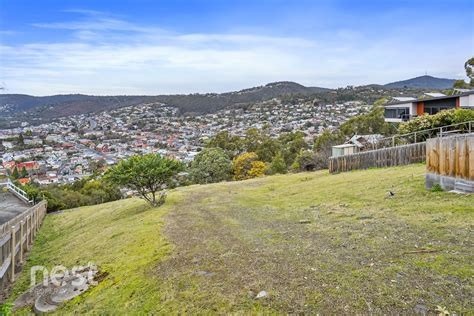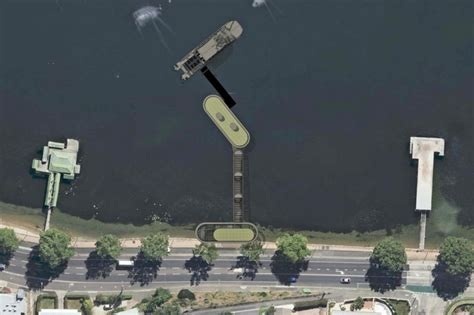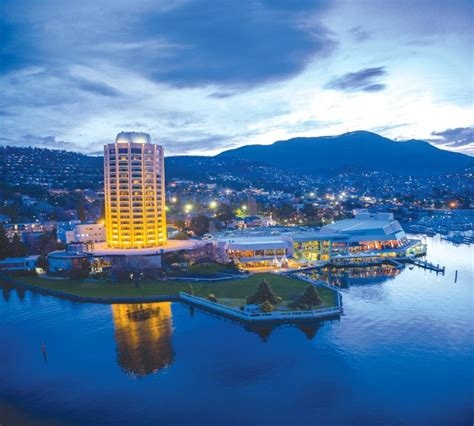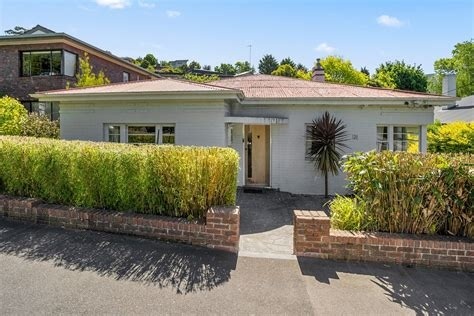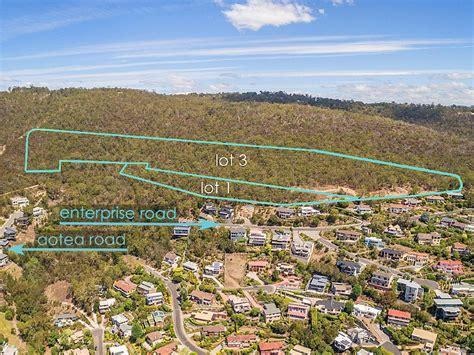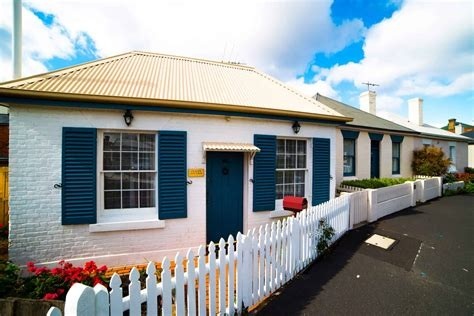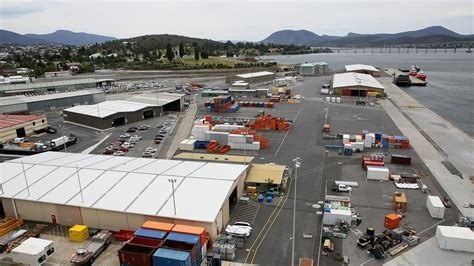Chart Color Schemes
est. as @ -- *
ABS ERP | -- people | --
2021 Census | -- people
Sales Activity
Curious about local property values? Filter the chart to assess the volume and appreciation (including resales) trends and regional comparisons, or scroll to the map below view this information at an individual property level.
Find a Recent Sale
Sales Detail
Population
Population growth drivers in Mount Nelson - Dynnyrne are strong compared to national averages based on AreaSearch's ranking of recent, and medium to long-term trends
Based on AreaSearch's analysis, Mount Nelson - Dynnyrne's population is around 5,258 as of Aug 2025. This reflects an increase of 205 people (4.1%) since the 2021 Census, which reported a population of 5,053 people. The change is inferred from the estimated resident population of 5,231 from the ABS as of June 2024 and an additional 30 validated new addresses since the Census date. This level of population equates to a density ratio of 663 persons per square kilometer. Mount Nelson - Dynnyrne's 4.1% growth since the 2021 census exceeded the SA3 area (2.0%), marking it as a growth leader in the region. Population growth for the area was primarily driven by overseas migration that contributed approximately 91.7% of overall population gains during recent periods.
AreaSearch is adopting ABS/Geoscience Australia projections for each SA2 area, released in 2024 with 2022 as the base year. For areas not covered by this data and to estimate growth by age group post-2032, Tasmania State Government's Regional/LGA projections are adopted with adjustments made employing a method of weighted aggregation of population growth from LGA to SA2 levels, released in 2022 with 2021 as the base year. Considering projected demographic shifts, an above median population growth is projected for statistical areas across the nation, with Mount Nelson - Dynnyrne expected to increase by 794 persons to 2041 based on the latest population numbers, showing a total increase of 14.6% over the 17 years.
Frequently Asked Questions - Population
Development
AreaSearch assessment of residential development drivers sees a low level of activity in Mount Nelson - Dynnyrne, placing the area among the bottom 25% of areas assessed nationally
Mount Nelson - Dynnyrne has recorded around 18 residential properties granted approval per year. Development approval data is produced by the ABS on a financial year basis, totalling 90 approvals across the past five financial years (between FY-20 and FY-25), with an additional two approved so far in FY-26. On average, 0.8 people have moved to the area for each dwelling built over these five years. This suggests that new supply is keeping pace with or exceeding demand, offering ample buyer choice while creating capacity for population growth beyond current forecasts.
The average value of new homes being built is $739,000, indicating that developers are targeting the premium market segment with higher-end properties. In FY-26, commercial approvals have reached $10.9 million, suggesting balanced commercial development activity. When compared to Greater Hobart, Mount Nelson - Dynnyrne records about 63% of the building activity per person. Nationally, it places among the 17th percentile of areas assessed, resulting in relatively constrained buyer choice and supporting interest in existing dwellings.
This is below average nationally, reflecting the area's maturity and pointing to possible planning constraints. Recent development has been entirely comprised of detached dwellings, preserving the area's low density nature with an emphasis on detached housing attracting space-seeking buyers. Interestingly, developers are building more traditional houses than the current mix suggests (82.0% at Census), indicating continued strong demand for family homes. The estimated count of 2835 people in the area per dwelling approval reflects its quiet, low activity development environment. Population forecasts indicate Mount Nelson - Dynnyrne will gain 767 residents through to 2041. At current development rates, housing supply may struggle to match population growth, potentially heightening buyer competition and supporting price increases.
Frequently Asked Questions - Development
Infrastructure
Mount Nelson - Dynnyrne has limited levels of nearby infrastructure activity, ranking in the 6thth percentile nationally
Changes to local infrastructure significantly impact an area's performance. AreaSearch has identified 14 projects likely to affect the area. Notable ones are Southern Outlet Transit Lane, Mount Nelson and Sandy Bay Neighbourhood Plan, Fragrance Group Conservatorium Development, and Queenborough Oval Redevelopment.
Professional plan users can use the search below to filter and access additional projects.
INFRASTRUCTURE SEARCH
Frequently Asked Questions - Infrastructure
Hobart City Deal
A 10-year partnership (2019-2029) between the Australian and Tasmanian Governments and the Clarence, Glenorchy, Hobart and Kingborough councils to deliver coordinated investments across Greater Hobart, including major transport upgrades such as the New Bridgewater Bridge, activation of the Northern Suburbs Transit Corridor, airport border services, Antarctic and science precinct initiatives, housing and urban renewal, and smart city programs.
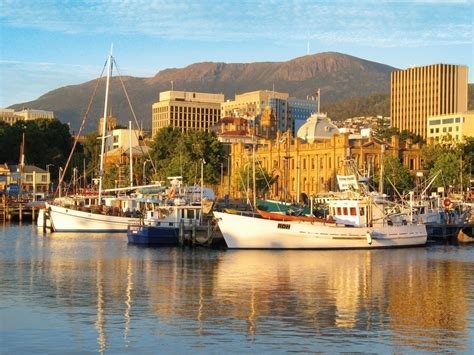
Macquarie Wharf Redevelopment (Hobart Port Precinct Capacity Improvements)
TasPorts is progressing a staged redevelopment of Hobart's Macquarie Wharves to increase capacity and modernise critical port infrastructure that supports Antarctic research, cruise, trade and logistics. Stage 1 will demolish and rebuild Macquarie Wharf 6 with new fit-for-purpose wharf structure, shore power and priority berthing for RSV Nuyina. Subsequent stages will upgrade Macquarie Wharves 4 and 5 to further grow tourism and trade.
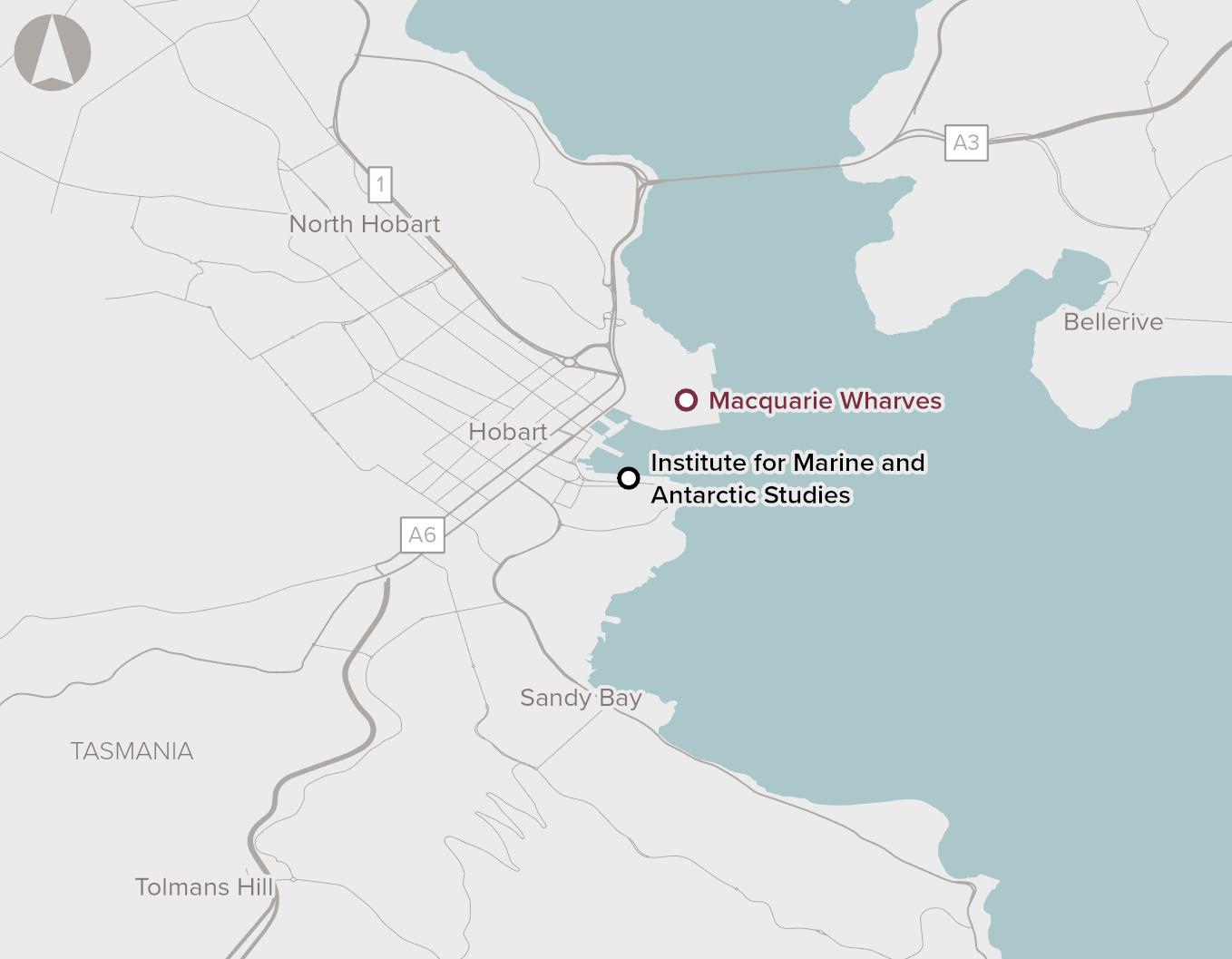
South Arm Highway Upgrade (Acton Road and South Arm Road intersection)
The Tasmanian Government is progressing with the design for the Acton Road and South Arm Road intersection upgrade in Lauderdale, as part of the South Arm Highway Upgrade. This project aims to reduce traffic congestion, improve travel time reliability, and enhance road safety. The first stage of the upgrade will see dual lanes each direction extend from Pass Road to Oakdowns.
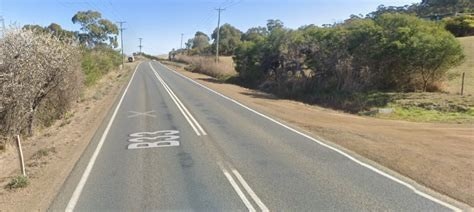
Southern Outlet Transit Lane
Part of Hobart City Deal southern projects to improve public transport access. Will work with Macquarie Street and Davey Street Bus Improvements and express bus services to improve transport from southern suburbs to CBD.
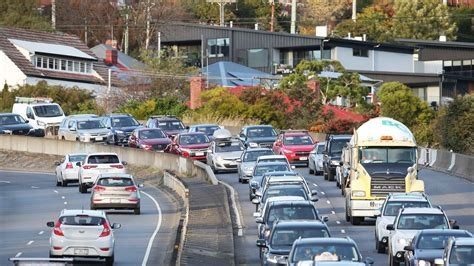
Queenborough Oval Redevelopment
A $3.8 million upgrade of Queenborough Oval in Sandy Bay to modernise community sport facilities. Scope includes new changerooms with a rooftop viewing terrace, medical room, accessible ramp and walkway, stairwell, lift, umpire facilities, multi-purpose space and unisex public toilets. Works commenced in November 2024 with funding from the Tasmanian Government ($2m) and City of Hobart ($1.8m).
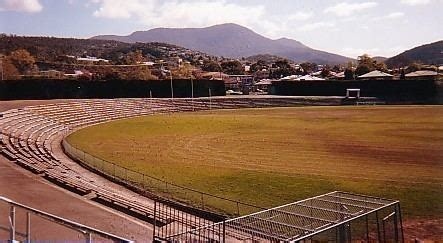
University of Tasmania Sandy Bay Campus Redevelopment
The University of Tasmania is redeveloping its Sandy Bay campus, including relocating parts to the Hobart CBD as part of the Southern Infrastructure Strategy. The project involves new teaching and research facilities, student accommodation, sports facilities, and a science and technology precinct with state-of-the-art research and teaching spaces. Additionally, over 20 hectares above Churchill Avenue are proposed for residential rezoning.

Mount Nelson and Sandy Bay Neighbourhood Plan
20-year neighbourhood plan led by City of Hobart to guide future growth and change across Mount Nelson and Sandy Bay. Current phase is preparing the Draft Neighbourhood Plan following the 2023 discussion paper and engagement; final plan was signposted for Council endorsement in early 2025.
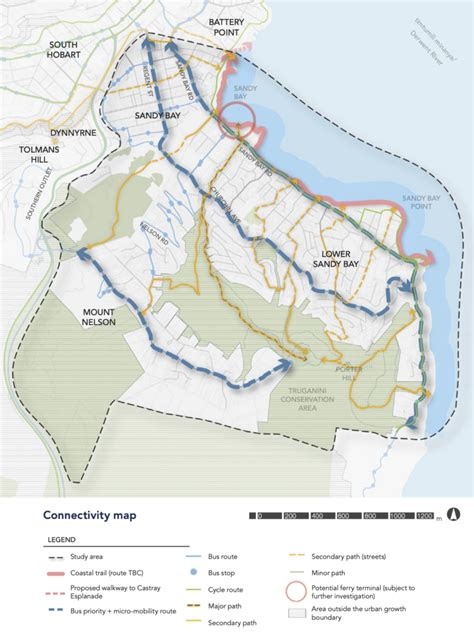
Fragrance Group Conservatorium Development
Redevelopment of former ABC/Conservatorium of Music building into 75 serviced apartments with ground floor cafe. Singapore-based Fragrance Group development approved by Hobart City Council in April 2025, preserving heritage mosaic by George Davis.
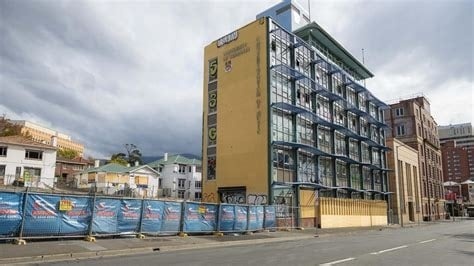
Employment
The labour market in Mount Nelson - Dynnyrne shows considerable strength compared to most other Australian regions
Mount Nelson - Dynnyrne has a highly educated workforce with strong representation in professional services. Its unemployment rate was 2.2% as of June 2025.
Residents had an employment rate of 71.9%, which is 1.9% higher than Greater Hobart's rate of 4.1%. Workforce participation was at 65.0%, slightly higher than Greater Hobart's 61.6%. Employment is concentrated in health care & social assistance, education & training, and professional & technical services. The area shows a particularly strong specialization in professional & technical services with an employment share of 1.7 times the regional level.
Construction has limited presence with 4.9% employment compared to 8.7% regionally. Between June 2024 and June 2025, labour force decreased by 1.6% while employment declined by 2.0%, leading to an unemployment rate rise of 0.4 percentage points. In comparison, Greater Hobart recorded a 1.5% employment decline with a slight decrease in unemployment. State-level data up to Sep-25 shows Tasmania's employment grew by 0.77% year-on-year, adding 1,170 jobs and maintaining an unemployment rate of 4.3%, outperforming the national average unemployment rate of 4.5%. Jobs and Skills Australia forecasts national employment growth at 6.6% over five years and 13.7% over ten years. Applying these projections to Mount Nelson - Dynnyrne's employment mix suggests local growth of approximately 6.9%% over five years and 14.2% over ten years, based on a simple weighting extrapolation for illustrative purposes only.
Frequently Asked Questions - Employment
Income
The economic profile demonstrates above-average performance, with income metrics exceeding national benchmarks based on AreaSearch comparative assessment
AreaSearch data from financial year 2022 shows Mount Nelson - Dynnyrne had a median taxpayer income of $51,756 and an average income of $87,545. These figures are among the highest in Australia, compared to Greater Hobart's median of $51,272 and average of $63,777. By March 2025, adjusted for Wage Price Index growth of 11.94%, estimated incomes would be approximately $57,936 (median) and $97,998 (average). Census data indicates incomes in Mount Nelson - Dynnyrne cluster around the 54th percentile nationally. The income bracket of $1,500 to $2,999 is dominant, with 30.5% of residents (1,603 people), similar to regional levels at 32.2%. After housing costs, residents retain 87.0% of their income, reflecting strong purchasing power. The area's SEIFA income ranking places it in the 8th decile.
Frequently Asked Questions - Income
Housing
Mount Nelson - Dynnyrne is characterized by a predominantly suburban housing profile, with above-average rates of outright home ownership
Dwelling structure in Mount Nelson - Dynnyrne, as per the latest Census, consisted of 81.5% houses and 18.5% other dwellings (semi-detached, apartments, 'other' dwellings). In comparison, Hobart metro had 69.2% houses and 30.9% other dwellings. Home ownership in Mount Nelson - Dynnyrne stood at 38.1%, with the rest either mortgaged (33.2%) or rented (28.7%). The median monthly mortgage repayment was $1,820, higher than Hobart metro's average of $1,800. Median weekly rent in Mount Nelson - Dynnyrne was $360, compared to Hobart metro's $390 nationally. Nationally, Mount Nelson - Dynnyne's mortgage repayments were lower at $1,820 than the Australian average of $1,863, while rents were less at $360 than the national figure of $375.
Frequently Asked Questions - Housing
Household Composition
Mount Nelson - Dynnyrne features high concentrations of group households, with a higher-than-average median household size
Family households comprise 68.6% of all households, including 29.3% couples with children, 30.2% couples without children, and 8.0% single parent families. Non-family households constitute the remaining 31.4%, with lone person households at 24.3% and group households comprising 7.1%. The median household size is 2.5 people, larger than the Greater Hobart average of 2.3.
Frequently Asked Questions - Households
Local Schools & Education
Mount Nelson - Dynnyrne shows strong educational performance, ranking in the upper quartile nationally when assessed across multiple qualification and achievement indicators
Educational attainment in Mount Nelson - Dynnyrne significantly surpasses broader benchmarks. As of 2021, 55.0% of residents aged 15 and above hold university qualifications, compared to 25.5% in Tasmania (TAS) and 30.4% nationally in Australia. This substantial educational advantage positions the area strongly for knowledge-based opportunities. Bachelor degrees lead at 29.9%, followed by postgraduate qualifications at 19.7% and graduate diplomas at 5.4%.
Vocational pathways account for 19.9% of qualifications among those aged 15 and above, with advanced diplomas at 9.0% and certificates at 10.9%. Educational participation is notably high, with 36.1% of residents currently enrolled in formal education as of 2021. This includes 14.1% in tertiary education, 8.7% in primary education, and 7.0% pursuing secondary education. Mount Nelson - Dynnyrne's three schools have a combined enrollment reaching 1,587 students while the area demonstrates above-average socio-educational conditions with an ICSEA score of 1085. Education provision is balanced with two primary and one secondary school serving distinct age groups. School capacity exceeds typical residential needs, with 30.3 places per 100 residents compared to the regional average of 22.8, indicating that Mount Nelson - Dynnyrne serves as an educational center for the broader region.
Frequently Asked Questions - Education
Schools Detail
Nearby Services & Amenities
Transport
Transport servicing is high compared to other areas nationally based on assessment of service frequency, route connectivity and accessibility
Mount Nelson - Dynnyrne has 44 active public transport stops. All these stops are served by buses via 79 different routes. These routes facilitate a total of 7,386 weekly passenger trips.
Residents' access to transportation is rated good, with an average distance of 200 meters to the nearest stop. The service frequency across all routes is 1,055 trips per day, which equates to approximately 167 weekly trips per individual stop.
Frequently Asked Questions - Transport
Transport Stops Detail
Health
Mount Nelson - Dynnyrne's residents are extremely healthy with both young and old age cohorts seeing low prevalence of common health conditions
Analysis shows Mount Nelson - Dynnyrne has low prevalence of common health conditions among both young and old age groups. Private health cover is high at approximately 64% (3,354 people), compared to 58.9% across Greater Hobart and 55.3% nationally. Mental health issues impact 9.0%, asthma affects 6.8%.
72.2% report no medical ailments, higher than Greater Hobart's 69.8%. The area has 16.8% seniors (881 people), lower than Greater Hobart's 18.8%. Senior health outcomes are strong, outperforming the general population in health metrics.
Frequently Asked Questions - Health
Cultural Diversity
Mount Nelson - Dynnyrne was found to be more culturally diverse than the vast majority of local markets in Australia, upon assessment of a range of language and cultural background related metrics
Mount Nelson-Dynnyne, surveyed in 2021, had a population that was more culturally diverse than most local areas. 30.8% were born overseas, and 24.3% spoke a language other than English at home. Christianity was the predominant religion, comprising 32.4%.
Judaism, however, was overrepresented at 0.3%, compared to 0.2% regionally. In terms of ancestry, the top groups were English (27.9%), Australian (22.6%), and Other (9.2%). Notably, Russian (0.6%) and Polish (1.0%) were also overrepresented compared to regional averages.
Frequently Asked Questions - Diversity
Age
Mount Nelson - Dynnyrne's population is slightly younger than the national pattern
The median age in Mount Nelson - Dynnyrne is 36 years, which is slightly below Greater Hobart's average of 39 years and also below the Australian median of 38 years. Compared to Greater Hobart, Mount Nelson - Dynnyrne has a higher proportion of residents aged 15-24 (18.3%), but fewer residents aged 25-34 (13.9%). This concentration of 15-24 year-olds is significantly above the national average of 12.5%. Between the 2021 Census and the present, the proportion of residents aged 15 to 24 has increased from 15.3% to 18.3%, while those aged 75 to 84 have risen from 4.3% to 6.2%. Conversely, the proportion of residents aged 25 to 34 has decreased from 16.3% to 13.9%, and those aged 65 to 74 have fallen from 11.0% to 9.3%. By the year 2041, Mount Nelson - Dynnyrne is projected to experience notable changes in its age distribution. Notably, the 45 to 54 age group is expected to grow by 44%, adding 278 people and reaching a total of 907. Meanwhile, both the 65 to 74 and 35 to 44 age groups are anticipated to have reduced numbers.
